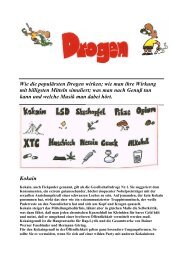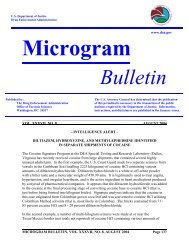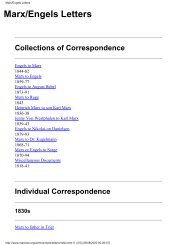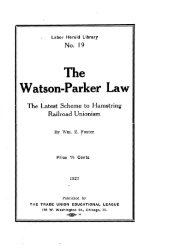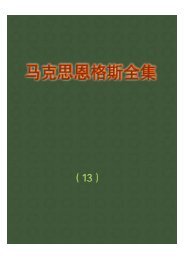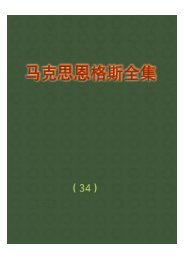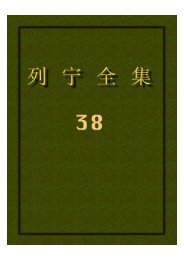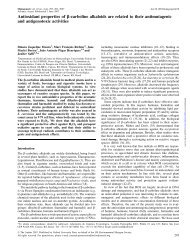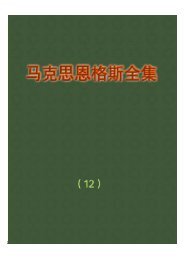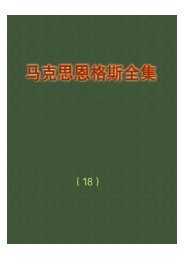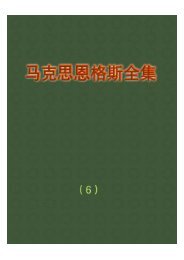Elfspice's Compleat Acacia Extraction Guide
Elfspice's Compleat Acacia Extraction Guide
Elfspice's Compleat Acacia Extraction Guide
You also want an ePaper? Increase the reach of your titles
YUMPU automatically turns print PDFs into web optimized ePapers that Google loves.
N,N Dimethyltryptamine. It is equally applicable to mimosa hostilis, and is likely<br />
to be useful for any other DMT source contained in the bark of a plant (eg,<br />
desmanthus illinoensis). Chlorophyll laden sources, such as phalaris and<br />
psychotria viridis et al have not been studied by the author, however at some<br />
point in the future the special considerations for these leaf materials will be<br />
added.<br />
One thing that I have learned in recent months about the process of extracting<br />
alkaloids is that the long periods of time suggested in older guides are<br />
unnecessary, this suspicion started to come to me when I witnessed the acid/base<br />
extraction of alkaloids from an alkaloid synthesis and saw that the alkaloids can<br />
in fact cross phases in a matter of minutes, not hours or days.<br />
Taking care to ensure certain pH levels are used also eases and improves the<br />
process, specifically in the acid phase the pH is better if it is about 4, and in the<br />
extraction less emulsion problems occur when working with a pH above 12.5<br />
(sodium hydroxide does not raise the pH above 13.5 when diluted 5g/100ml, so<br />
the concern about 'pH spikes' is unnecessary so long as the base is diluted). When<br />
washing and extracting, use gentle agitation rather than violent, swirl, stir or turn<br />
it end over end gentlyrather than shaking it. Water washing is less of a problem<br />
in this respect, usually by that stage the majority of emulsion causing chemicals<br />
have been removed.<br />
Something else which I have heard from others, which I have now verified, is the<br />
value of doing washes. Previously washing was little mentioned, and only the<br />
wash of the acidic extract was suggested (and again, a much longer than<br />
necessary time stated), when in fact the best results seem to be from doing a non<br />
polar wash of the acidic extract, and using a fairly low pH (like 8-9) and no salt,<br />
for washing the non polar extract (the best proceedure seems to be using sodium<br />
bicarbonate as it reacts with sodium hydroxide to produce sodium carbonate,<br />
which more readly comes free of the nonpolar fraction). Washes ensure the<br />
resulting product is as free from contaminants of a non-alkaloidal nature as<br />
possible, in particular residuals of the base being used. Again, gentle agitation is<br />
completely sufficient for extractions and washes, and in the case of water washes,<br />
violent agitation will not allieviate suspended droplets of the base, the bubbles of<br />
the wash water, being alkaline, will wash some out, but will also leave the<br />
suspended bubbles of base in the nonpolar solvent, though by this stage in the<br />
process it doesn't matter as much as it should be quite clean already.<br />
Finally, the best methods for recrystallising the product seem to be coalescing for<br />
me as well, I will talk about this at the end, the purpose is not, properly speaking<br />
to make pretty rocks, though if large crystals are produced they have a longer<br />
shelf life due to lesser surface area per volume, but instead, the purpose of<br />
recrystallising is to eliminate the contaminants in the solvent commonly used<br />
(naptha), as well as reducing other contaminants. This requires slow cooling or<br />
progressive cool/warm steps.<br />
This guide will not attempt to cover the extraction processes for other plant<br />
materials, however it is intended to be comprehensive and to the point, and<br />
should apply more or less to other materials.<br />
I will also focus on the equipment which will ensure the best results with the least<br />
outlay without any compromise of efficacy of the process.




